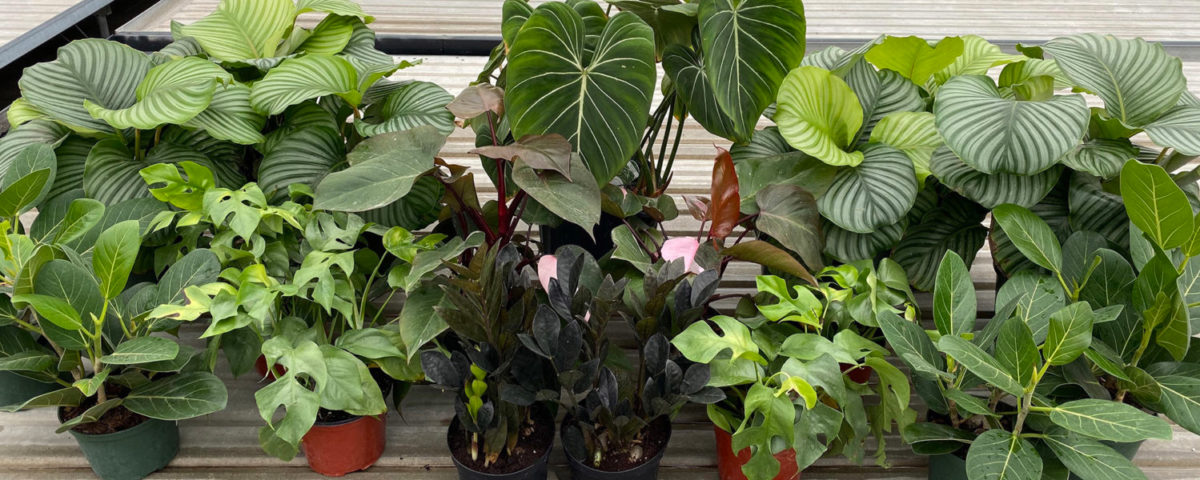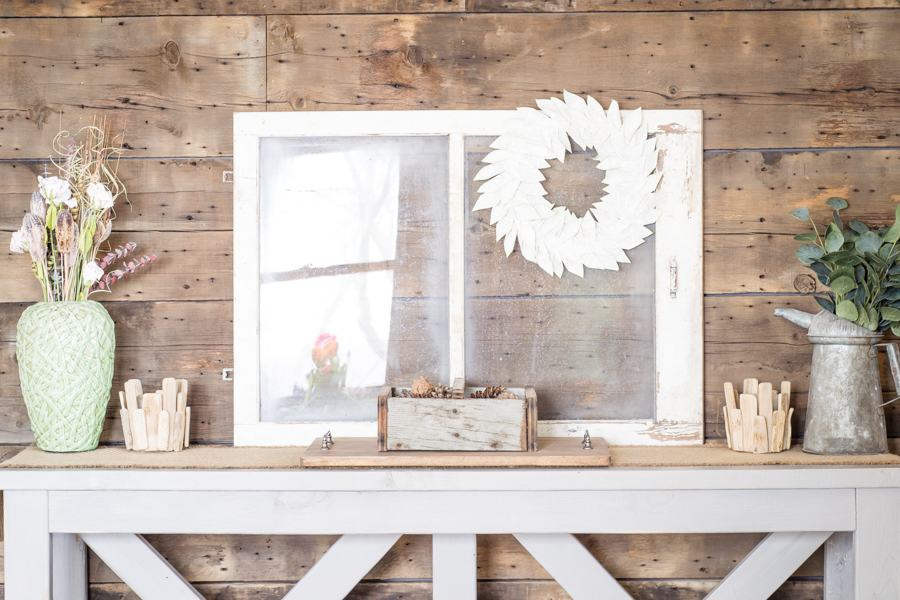Easiest Houseplants

Renting vs. Buying
February 12, 2021
Rural vs Urban Living
February 24, 2021Easiest Houseplants
It seems like 2020 really started a boom in the houseplant industry. Especially within the younger crowd. With everyone staying at home more and having more time to care for and learn about these green creatures, they have become increasingly more popular. The trend doesn’t seem to be going anywhere in 2021 either! If you are thinking you want to get on the houseplant train, you will want to start with the easier plants before jumping into the difficult ones. You need to make sure you have enough sunlight, the right amount of water and that you can tell if your plant is thriving or dying. Read on for our top 10 easiest houseplants!
LEGEND:
☀️ – How much sunlight this plant needs
💧 – How often this plant needs to be watered
🌡️ – Ideal temperature to keep this plant in
🌱 – How often to fertilize this plant
📏 – How tall this plant will grow
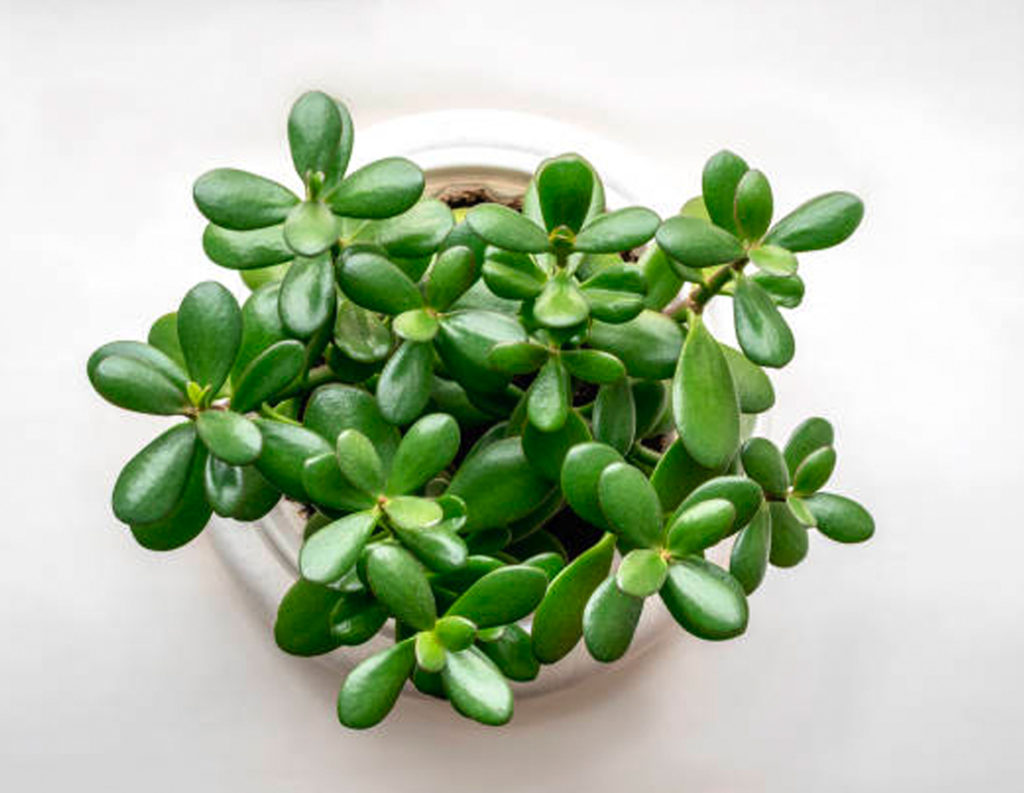
#1. Jade Plant
The jade plant is a fairly resilient succulent that is easy to grow indoors. They are distinguished by their thick woody stems and waxy oval-shaped green leaves. Sometimes they will also turn a red or pink colour. In some rare cases, your jade plant may even blossom in the spring! This plant has been very popular for many years and this may be because it is so easy to take care of. The jade plant is considered to be a symbol of good luck. They were very popular in the 1970s hanging in macramé planters. Now, the macramé and the jade plant have both came back in style. This makes this easy plant absolutely timeless and a great addition to your houseplant collection!
☀️ – Full, direct sunlight
💧 – Water when top of soil is dry to touch
🌡️ – Ideal temperature is between 18-24°C
🌱 – Fertilize once every six months
📏 – Up tp 5ft tall
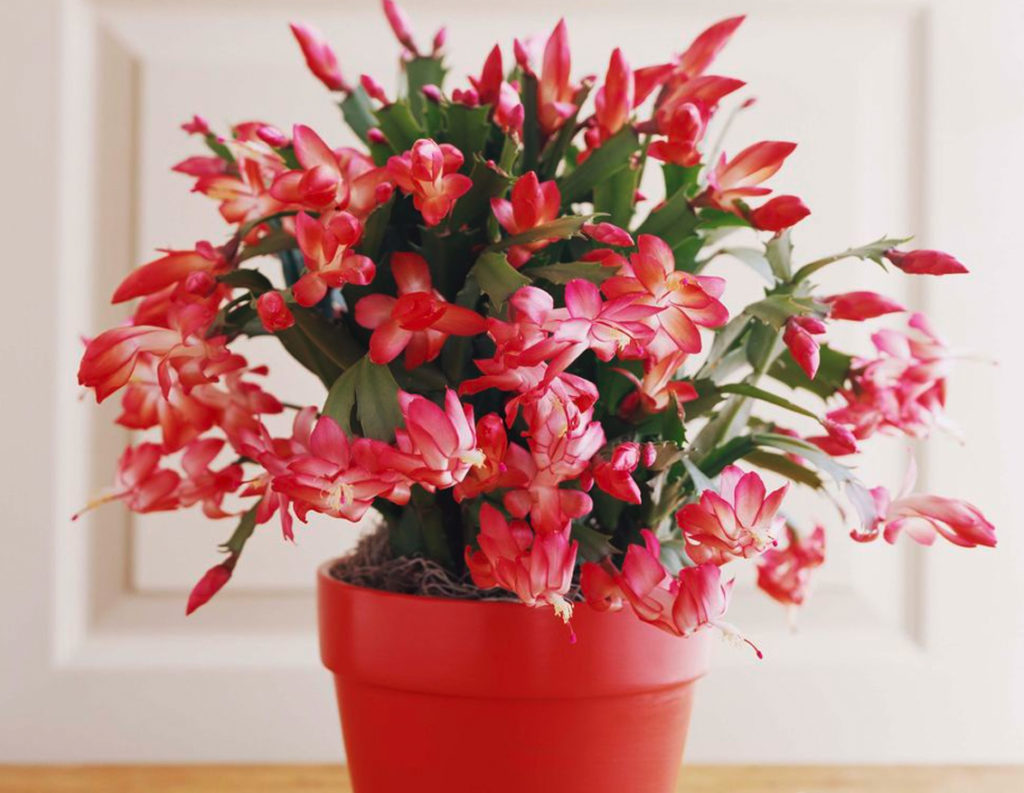
#2. Christmas Cactus
The Christmas (or Thanksgiving) Cactus is a beautiful, colourful succulent plant that will flower once per year (more if you are lucky!). True Christmas Cacti typically have dark red flowers with tear-drop-shaped leaves, while Thanksgiving cacti have bright pink flowers and claw-shaped leaves. To add to the confusion, there is also a third member to these holiday cacti, the Easter Cactus. The Easter flowers are typically pink or orange and can be identified by their star-shaped flowers. These stunning plants need a little bit of encouragement to bloom, but otherwise are very easy to care for. They should typically be repotted every 2-3 years.
☀️ – East-facing window with moderate sunlight
💧 – Water every 2-3 weeks, and keep soil evenly moist when blooming
🌡️ – Ideal temperature is 18°C
🌱 – Fertilize once every 2 weeks
📏 – Up to 3ft long
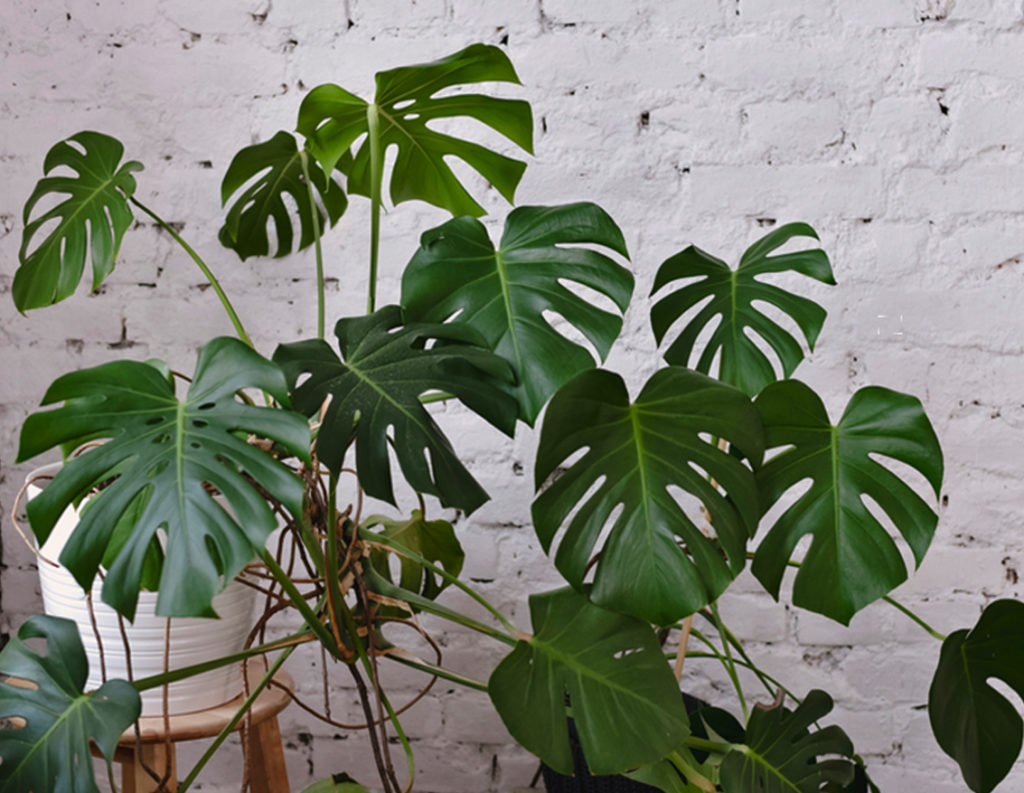
#3. Monstera
The Monstera is sometimes referred to as the Swiss Cheese Plant because of its distinctive holey leaves. It is native to Central America and thrives in tropical climates. Monstera can easily grow indoors and adds a beautiful focal point to any room. There are two different species of Monstera that are commonly used as houseplants. Monstera Deliciosa and Monstera Adansonii. The difference between the two can easily be found within the leaves. Adansonii has smaller leaves in comparison to the Deliciosa. The holes in the leaves are also different sizes. Monstera Adansonii leaves tend to have narrower holes with shapes that are generally more oval.
☀️ – Bright to medium indirect sunlight. Try to keep out of direct sunlight
💧 – Water every 1-2 weeks when the soil has dried out
🌡️ – Ideal temperature is between 18-30°C
🌱 – Fertilize once a month
📏 – Monstera can grow as tall as 8ft when properly cared for
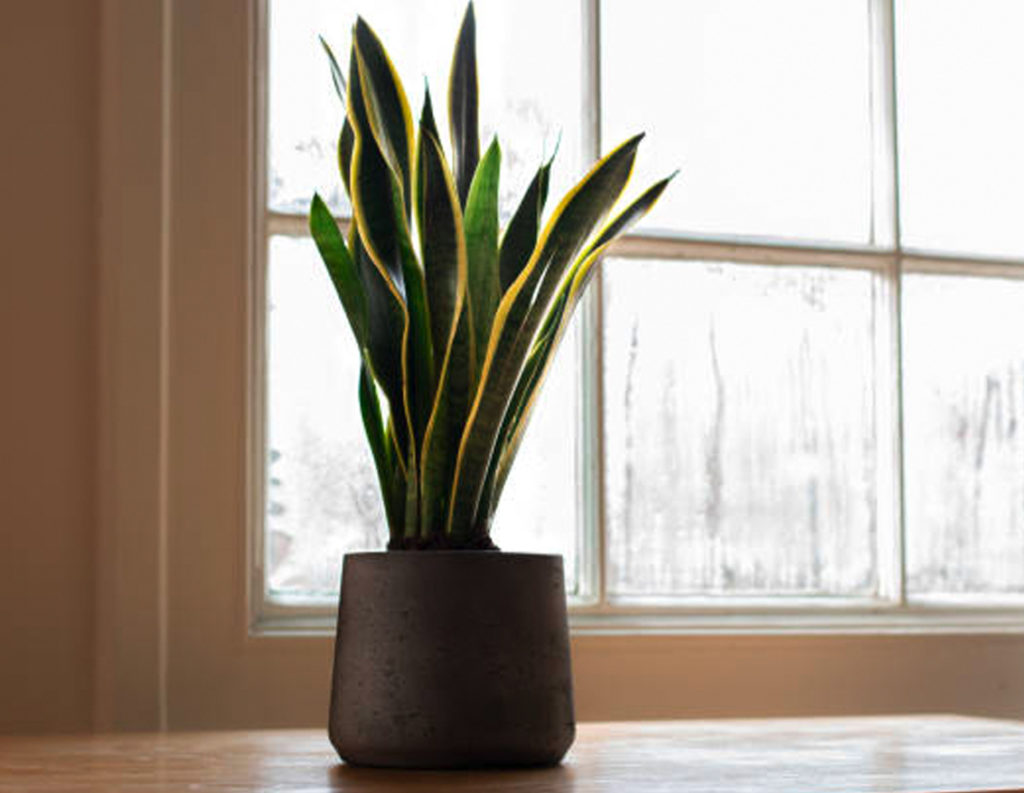
#4. Sansevierias
The Sansevierias, better known as the Snake Plant might just be the absolute easiest plant to care for because of its hardiness. You can pretty much forget about these plants in your home and that’s when they will do best! Snake Plants will pull harmful toxins from the air during the day and release oxygen at night, which makes them great for bedrooms! This beautiful plant is native to southern Africa and can basically withstand anything. The greenish-yellow leaves on the Snake Plant are sword-like and outstretch upwards. There are 8 different varieties of the Snake Plant. For an in-depth look at all of the different species, check out this article. The Snake Plant has a fairly slow growth rate, however, it will grow faster in stronger natural light. Of course, there are a few things you can do to help it thrive.
☀️ – Bright, indirect sunlight. Can still thrive in low-light
💧 – Water when the soil is dried out, every 2-8 weeks
🌡️ – Ideal temperature is between 13-30°C
🌱 – Fertilize every other watering in spring & summer
📏 – Between 1-4ft tall
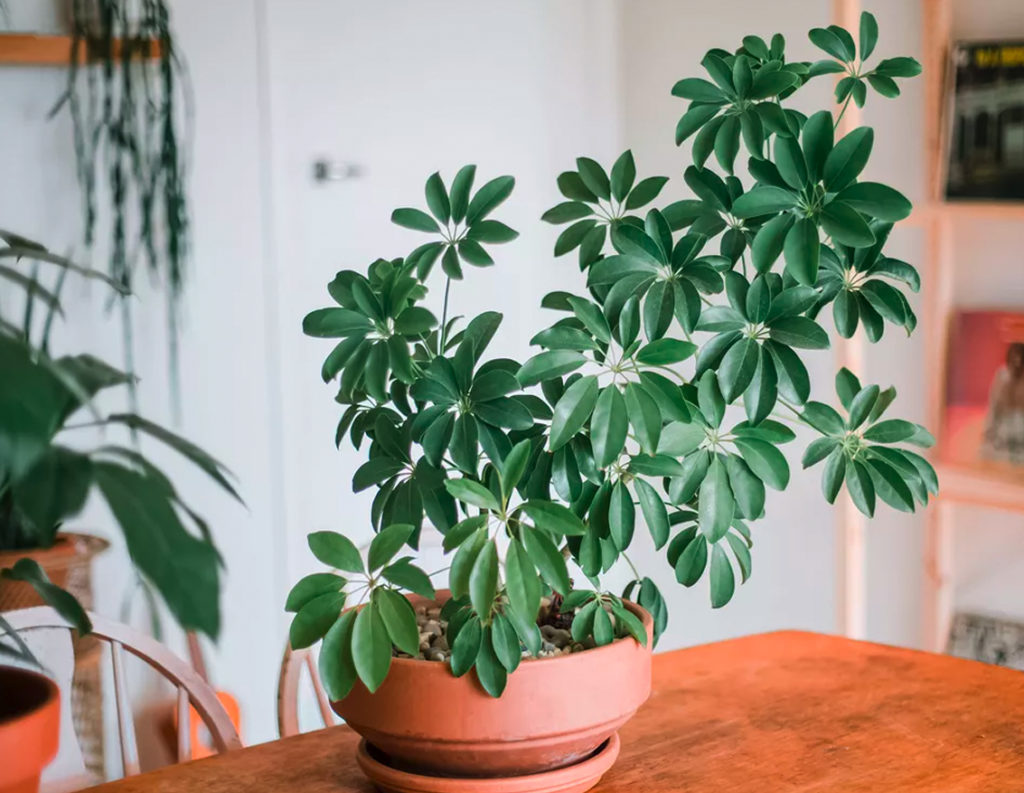
#5. Schefflera
The Schefflera, otherwise known as the Umbrella Plant, is another hardy plant that can thrive in low-light conditions. Native to Taiwan and South China, the Schefflera can grow up to 40ft tall outdoors in the wild. Don’t worry, you can control the height of your indoor Schefflera so it doesn’t reach these heights. These plants are easily identified by their 8-pronged leaves which notably resemble umbrellas. The Schefflera comes in many different varieties, but the 2 most popular are the Schefflera atinophylla and the Schefflera arboricola, otherwise known as the “dwarf umbrella tree”. Your Schefflera is sure to get lots of compliments due to its striking appearance and size.
☀️ – Bright, indirect sunlight
💧 – Water weekly when the soil dries out
🌡️ – Ideal temperature is between 18-32°C
🌱 – Fertilize once a month
📏 – Schefflera actinophylla can grow up to 10ft tall, while Schefflera arboricola can grow up to 4ft tall
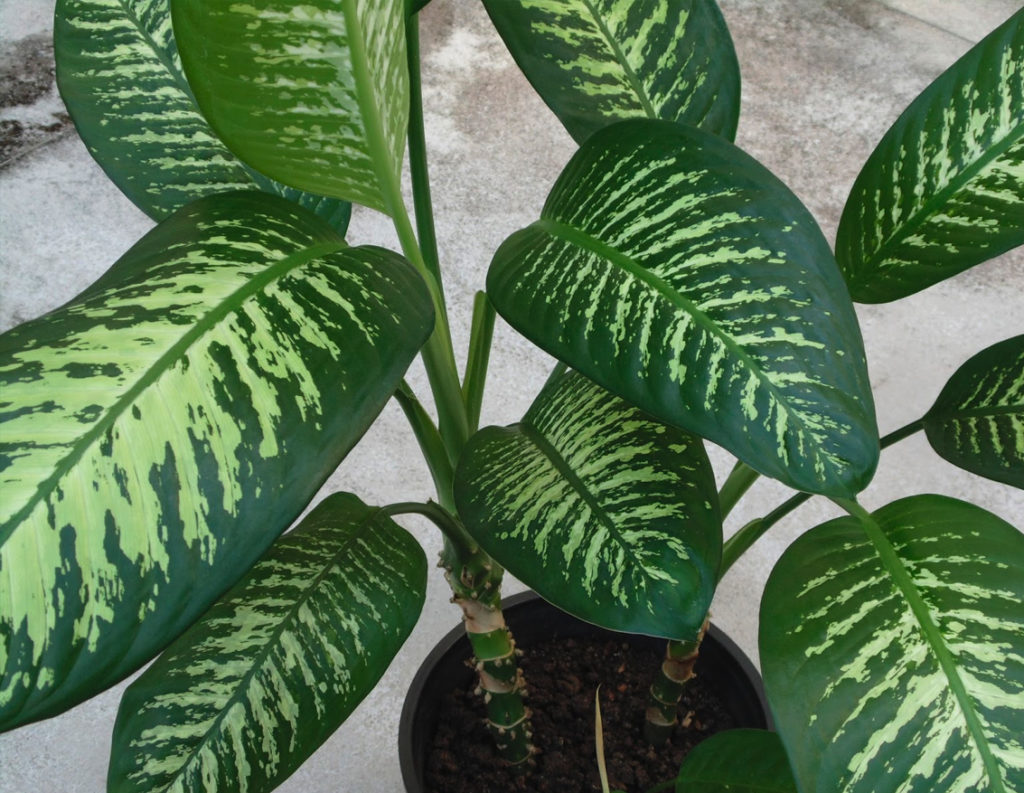
#6. Dieffenbachia
Dieffenbachia is one of the easiest houseplants because it is so adaptable to many living conditions. These beauties can add a fun, tropical look to any room. The nickname of the Dieffenbachia is “dumbcane” and this is because if you ingest its sap, it can cause you to temporarily become mute or “dumb”. Because of this, it is generally best to use gloves when handling this plant. The plant features long, oval-shaped leaves in a variety of combinations of green and white colours. With perfect growing conditions, these plants can produce stunning flowers that loosely resemble a peace lily.
☀️ – Indirect sunlight, can be grown in low-light
💧 – Water when top 2-inches of soil is dry
🌡️ – Ideal temperature is between 21-26°C
🌱 – Fertilize twice a month
📏 – Up to 20ft tall, but can be pruned to stay around 3-8ft
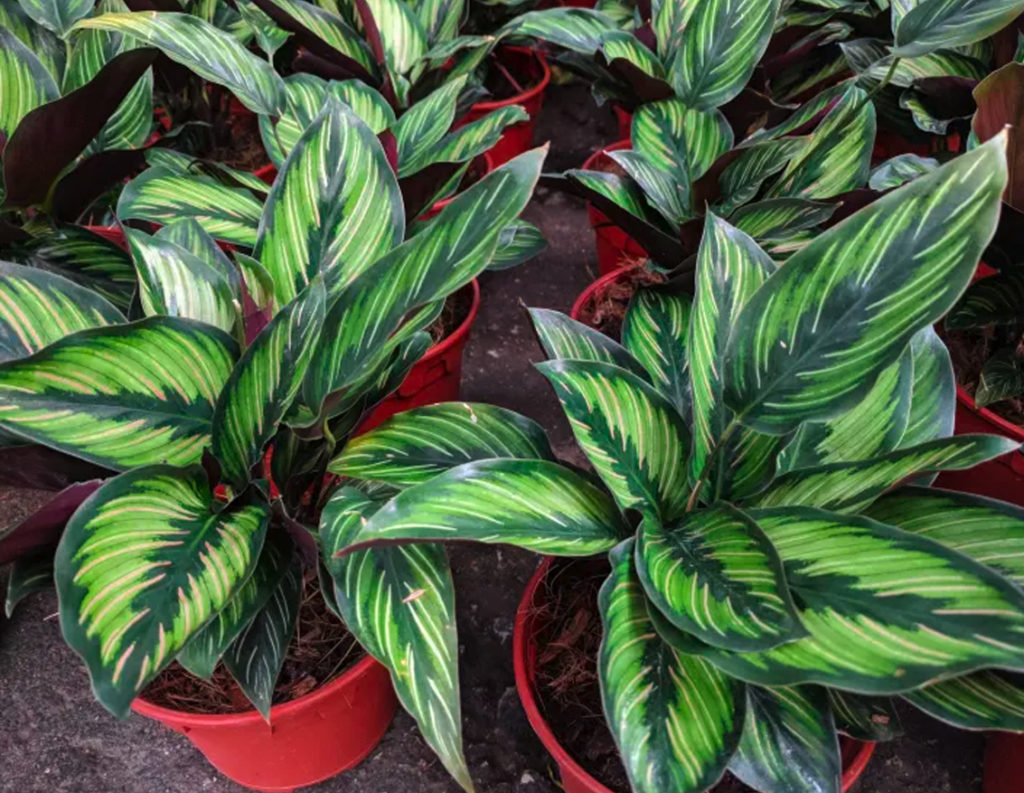
#7. Calathea
The Calathea, or “Prayer Plant” is a tropical plant native to the jungles of the Amazon in South America. Calathea is used for handicraft and food wrapping in the Amazon because of the diversity of the leaf shapes. Their colourful leaf patterns make them an attractive addition to your plant collection. They are one of the easiest and most popular houseplants. They are referred to as “Prayer Plants” due to the daily movements of their leaves. Their leaves will move upwards at night time and lowered during the day. There are many different varieties of the Calathea ranging in colours from greens to whites, to reds and pinks. These houseplants are sure to liven up your space!
☀️ – Medium to bright indirect sunlight, can tolerate low light
💧 – Water every 1-2 weeks, allow soil to dry out between waterings
🌡️ – Ideal temperature is between 18-30°C
🌱 – Fertilize every 2 weeks
📏 – Up to 2ft
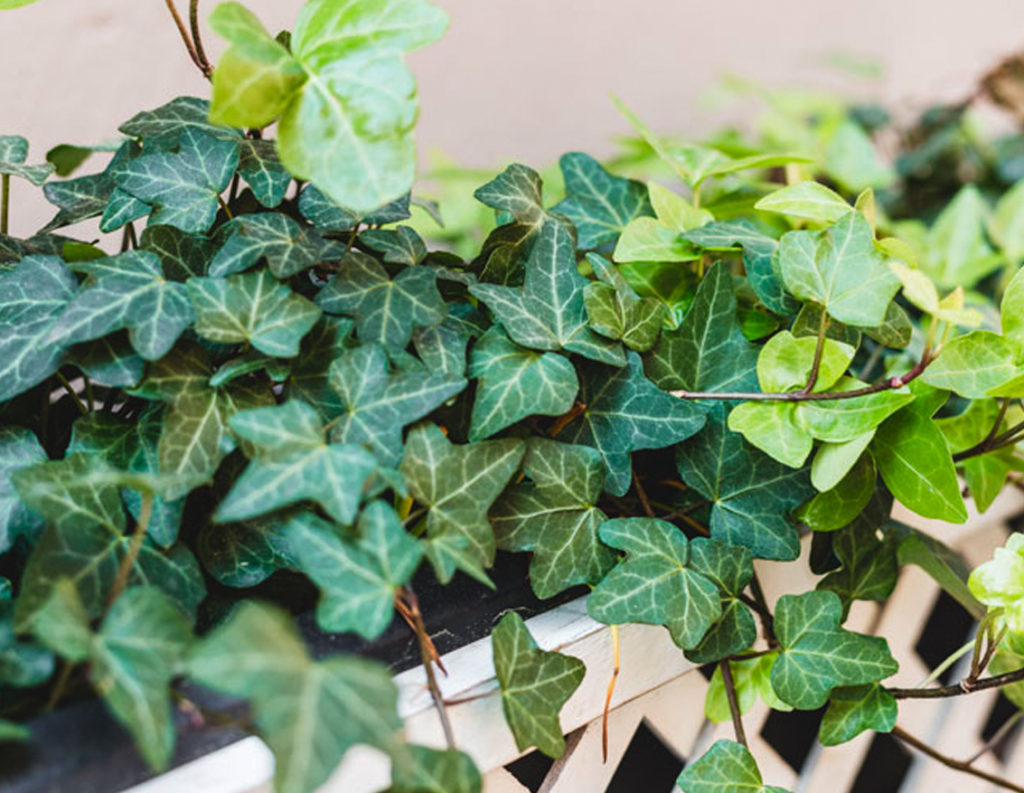
#8. English Ivy
English Ivy is native to Europe, western Asia, and northern Africa. It was a sacred plant for the ancient Greeks and Romans who believed this plant represented female divinity. English Ivy will either grow out or upwards, climbing up trellises and walls. It is a fast grower and is even considered invasive and illegal to plant outdoors in some areas. But, it makes a beautiful, indoor houseplant! English Ivy looks amazing in hanging planters, spilling over the sides. English Ivy is easy to control by trimming its vines. This plant is also very easily propagated and can be given as gifts. These hardy plants can actually survive temperatures as low as -18°C, so feel free to keep it in the garage in winter!
☀️ – Bright, indirect sunlight
💧 – Water when top of soil is dry to touch
🌡️ – Ideal temperature is between 7-26°C
🌱 – Fertilize once a month
📏 – Can grow to 100ft in length if never trimmed
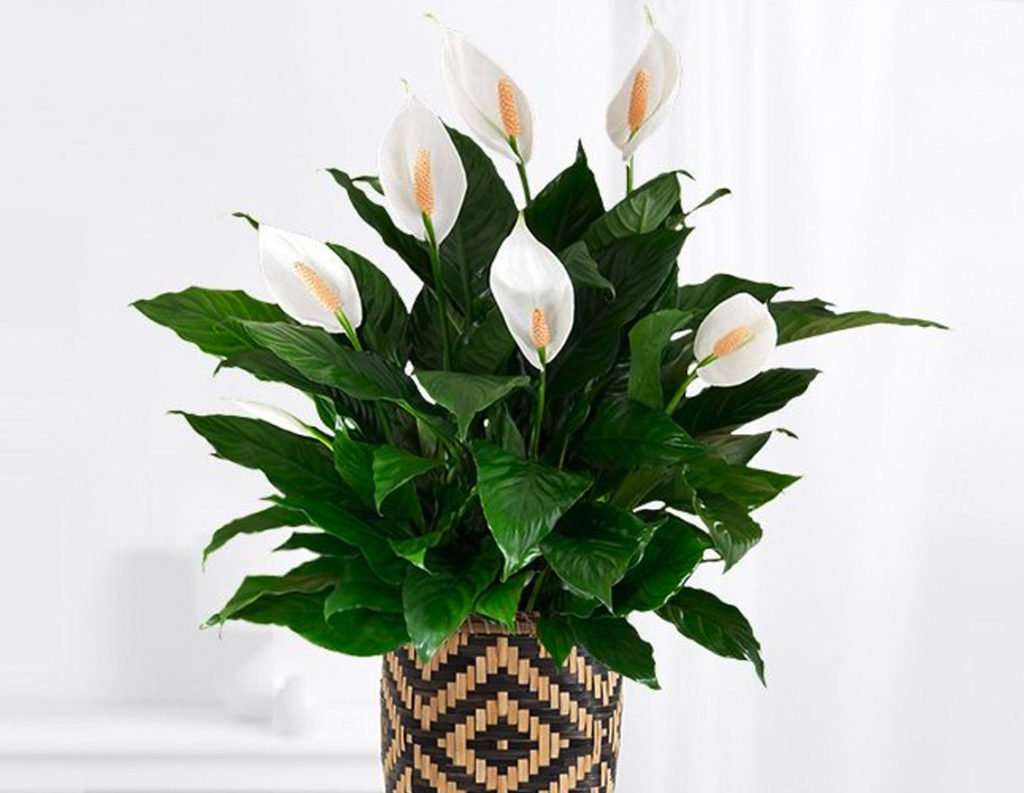
#9. Peace Lily
Peace Lilies, otherwise known as “Closet Plants” are one of the easiest houseplants due to their ability to thrive in such low-light areas. These tropical plants are native to South America and Southeastern Asia. Peace Lilies feature large, white and yellow “flowers” that will brighten up any space. Not only do they look great, but they also help to purify the air in the room they are in. If your peace lily isn’t flowering, try moving it to a spot with more light. Though they are very tolerant of low-light, they really flourish with more light. Peace lilies make great gifts because they are so easy to take care of.
☀️ – Low-light or partial shade
💧 – Water once per week
🌡️ – Ideal temperature is between 18-26°C
🌱 – Fertilize once every six weeks
📏 – Between 1-4ft tall
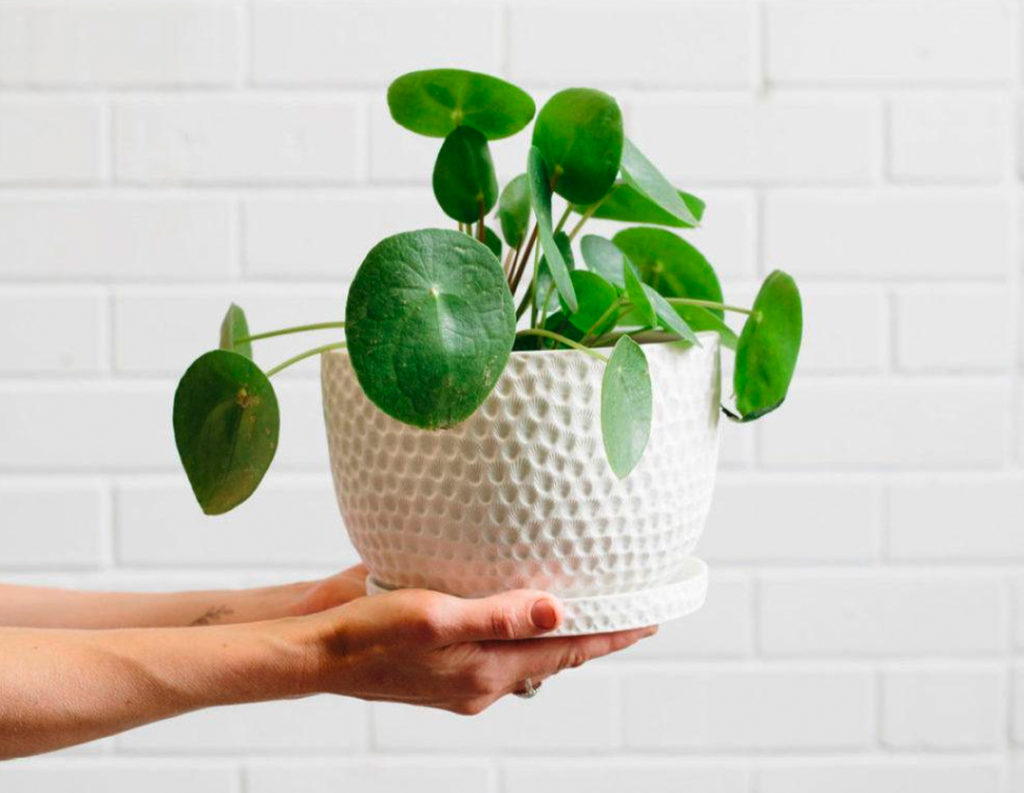
#10. Pilea Peperomioides
The Pilea Peperomioides is well known for its representation of good luck and fortune. Easily recognized by their unique flat, round green leaves that are really unlike any other plant. Because of these interesting leaves, they have also been dubbed the UFO or Pancake Plant. Most commonly referred to as the Chinese Money Plant, it is said that if you place a coin in its soil, it will attract wealth and prosperity. We aren’t sure if this actually works or not, but we do know that this easy-to-care-for houseplant also purifies your air for you. Though it doesn’t do as good of a job as other plants do. So you may want more than 1 of these cute little plants in your house to reap their benefits (extra luck might be nice too!). They are quite easy to propagate as well, so they make a great gift!
☀️ – Medium-bright indirect sunlight
💧 – Water every 1-2 weeks, allow soil to dry out first
🌡️ – Ideal temperature is between 13-30°C
🌱 – Fertilize once a month
📏 – Up to 12 inches
There you have it! The top 10 easiest houseplants to care for. Not only are these plants easy to look after, but they will also add some great pizazz to your home! The most common problem people have when keeping houseplants is overwatering, so be sure not to water too much. Also, be sure to water enough. A general rule of thumb is that if your plant is looking bent over and wilting, it is probably time for some water. Another killer of houseplants is pests. For an in-depth article on common houseplant insect prevention, check out this link. We hope you learned something from this post and are able to bring some of these beautiful plants into your home.
Looking to grow vegetables indoors as well? Check out our article on the top 15 easy-to-grow vegetables!


